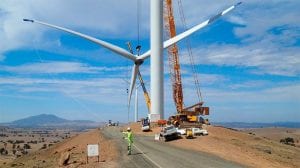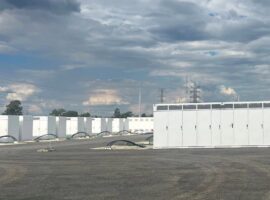Even UK steel billionaires get the blues. For more than a year now, Sanjeev Gupta has been letting his actions – and investments – do the talking on renewables in Australia.
Since his GFG Alliance bought the ailing Arrium steel producer in Whyalla last July, Gupta and his team have been detailing bigger and better and clearer plans to build up to 10GW of solar, as well as storage, to power his own and other energy intensive industrial majors, and generally revitalise Australia’s manufacturing sector.
But still, the message is not getting through – at least, not to some. And the frustration is starting to show.
“It’s still everybody’s perception that it is cheaper to make power from coal than it is from renewables, and it is no longer the case,” Gupta told Guardian Australia in an interview on Monday.
“It was the case not long ago, but it’s no longer the case, and we will prove it,” he said.
“If it was cheaper to make new coal plants, I would argue you should invest in that technology… But it should just turn on what’s more competitive.
“If you can make power from the sort of things that we’re doing and it can compete against a new coal plant, then why would you not do that, right? It’s obvious.”
Obvious. But not to the Collie shire council, in Western Australia, which just voted against installing rooftop solar on local government buildings because “we should be burning more coal.”
And not to the federal government, which continues to claim that the National Energy Guarantee offers the best chance for new coal-fired generation to be built in Australia.
And not to the mainstream media, which chose to interpret the Australian Energy Market Operator’s Integrated System Plan – which last week confirmed that the cheapest and smartest replacement for the country’s ageing coal-fired generators would be in solar, wind and storage technologies – as an endorsement for coal power.
That interpretation that was, in turn, lapped up by the likes of federal resources minister Matt Canavan.
Another report out today showing why it’s so important not to turn our back on coal. If you want cheaper power we have to use our energy resources! pic.twitter.com/kRn2yJLiAq
— Matthew Canavan (@mattjcan) July 16, 2018
But as Simon Holmes à Court reiterates in this piece today, even AEMO’s ‘neutral’ scenario sees renewables overtake coal sometime in 2032, when coal declines from 68 per cent to 22 per cent of the NEM, and renewables grow from 24 per cent to 72 per cent.
“So much for coal reigning supreme!”
And this unstoppable shift to renewables, and away from coal, is driven by the same set of economic factors that make Gupta’s case for solar and storage powered manufacturing in Australia a no-brainer.
As Holmes a Court explains:
“It should be noted that AEMO’s modelling algorithmically determines the least cost solution that delivers a mix that meets the scenario’s reliability, security and emissions goals.
“As such, the scenario is a rigorous, dispassionate and optimal solution to the ‘trilemma’ of cost, reliability and emissions.”
And if that doesn’t make it clear, here’s Gupta, again, in The Guardian:
“Whatever can be done (politically) to help with this transition I would welcome with open arms, but even if nothing is done we will still make investments. We may make less investments, we may do it slower, but we will still do it anyway because it’s doable,” he said.
“Of course, if you have the right tailwind and don’t have a headwind then of course you can do more and you can go faster, and you can do grander and bigger, which is what we would like to do, but it’s not a real issue for us. We will do it anyway.”










